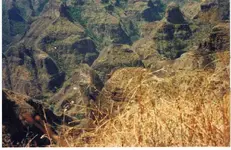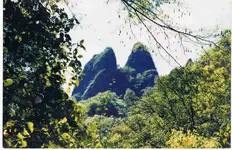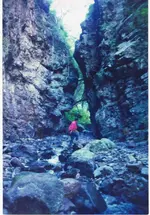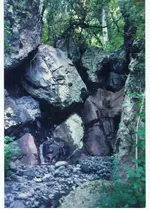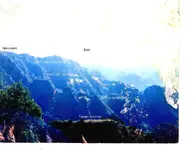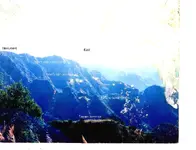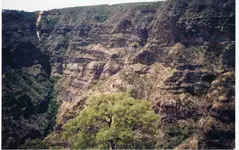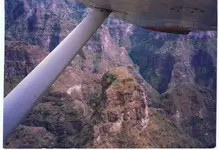Evening Oro de Tayopa: No, I haven't looked for any simply because I had positively identified Tayopa without it , and have tried to keep an extremely low key. At this point there is no need for it.
In the accompanying picture the saw mill is on top, Tayopa lies to the left about 1/2 way, in plain sight, even closer. The light yellow streak is the sawdust that they dump down into the Tayopa Barranca.
The green growth is from water draining from one of the tunnels, still closed. There is a 12 ft arrastre - drag mill - down there, now under debris still intact. It was still exposed when I first found Tayopa, a Mexican had been working it getting extremely good gold. After getting enough to retire, he never came back.
Don Jose de La Mancha




